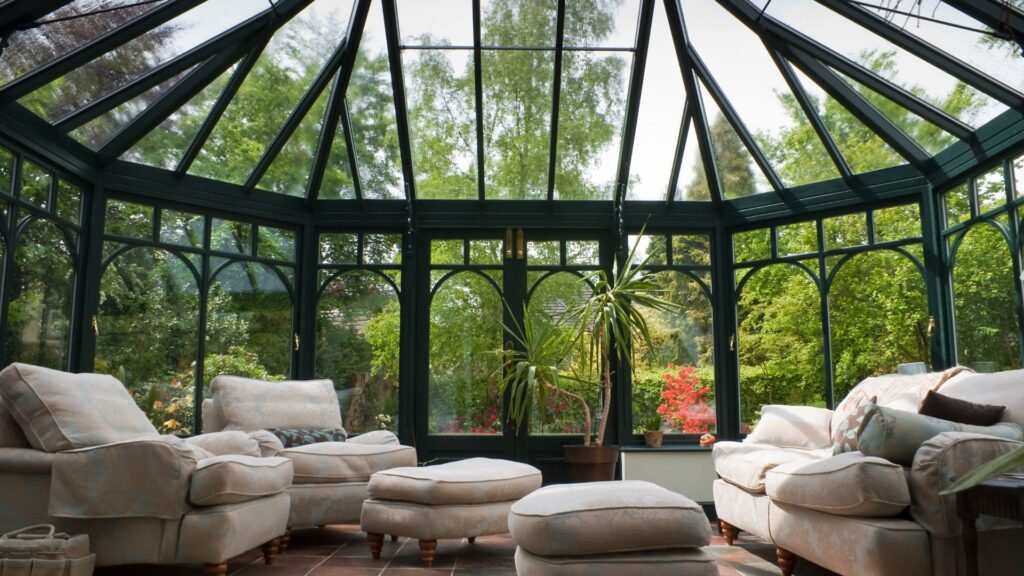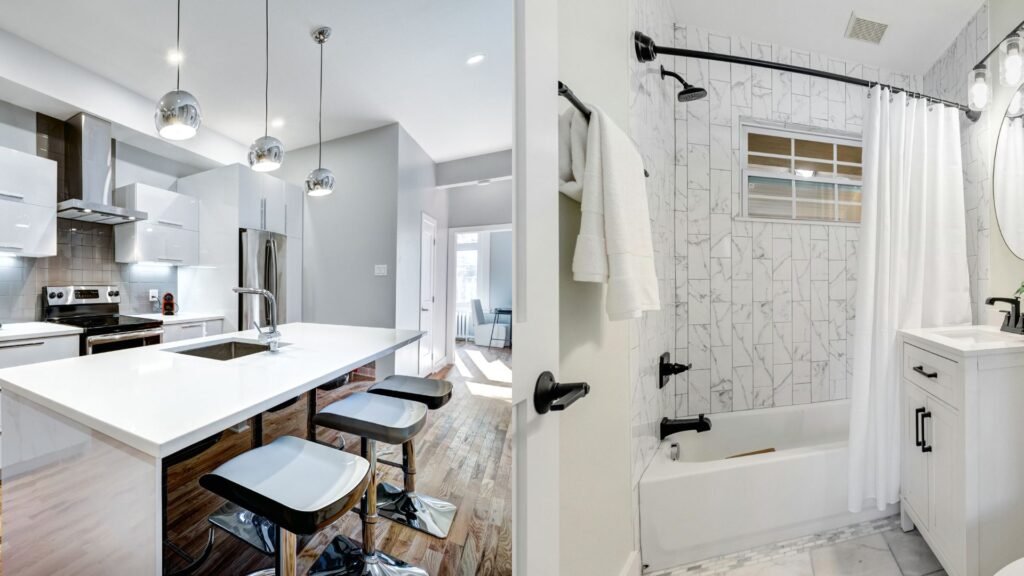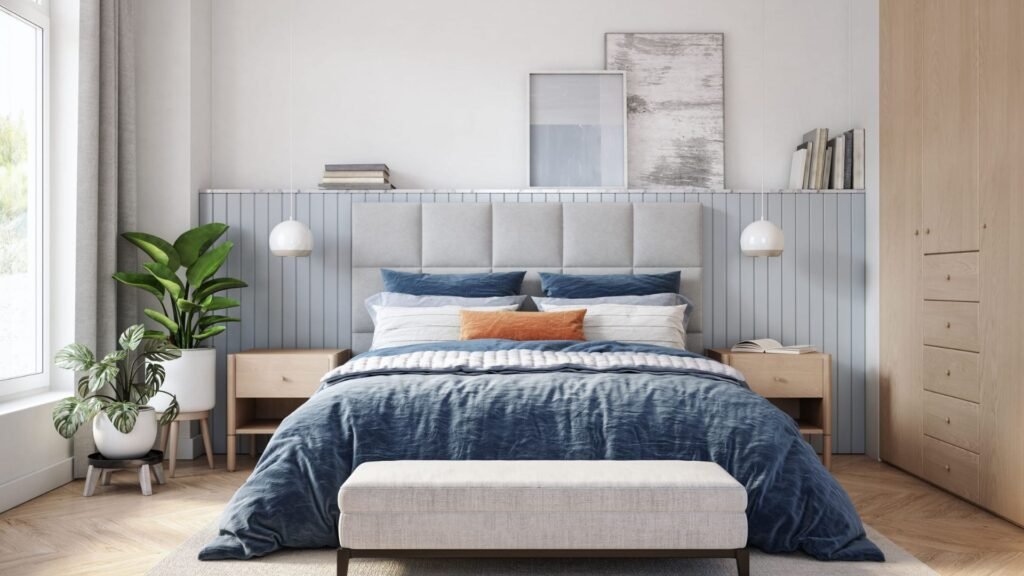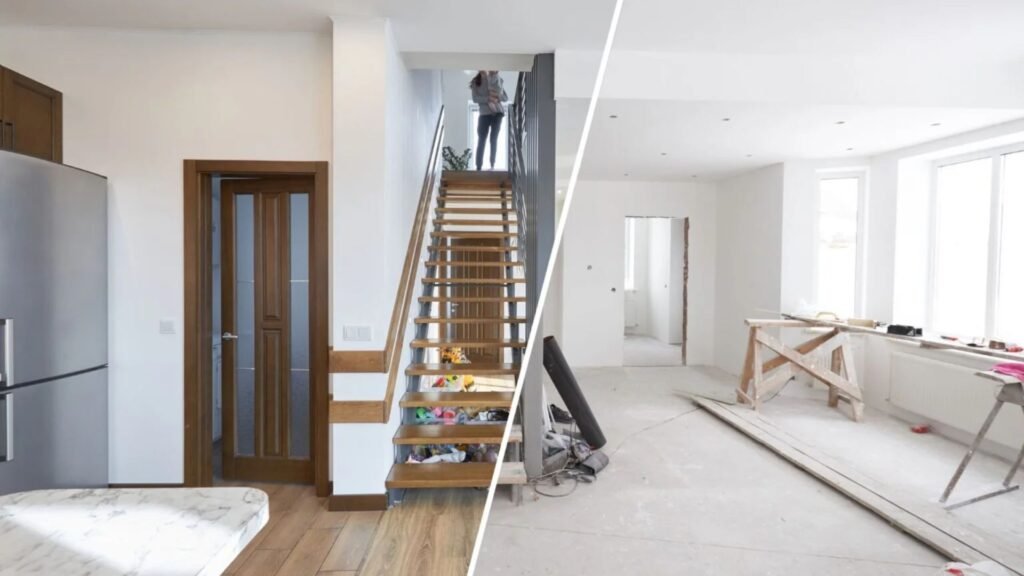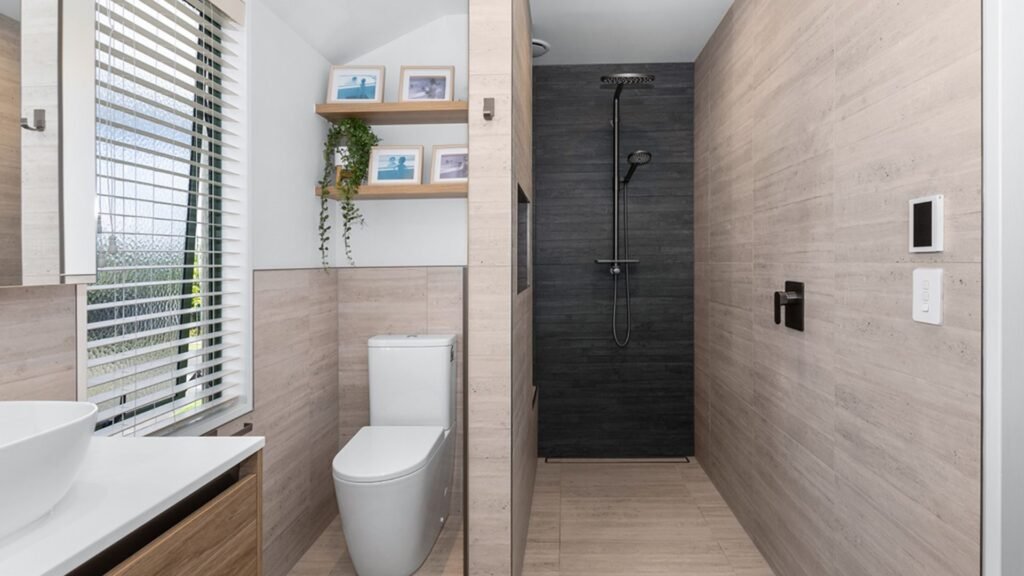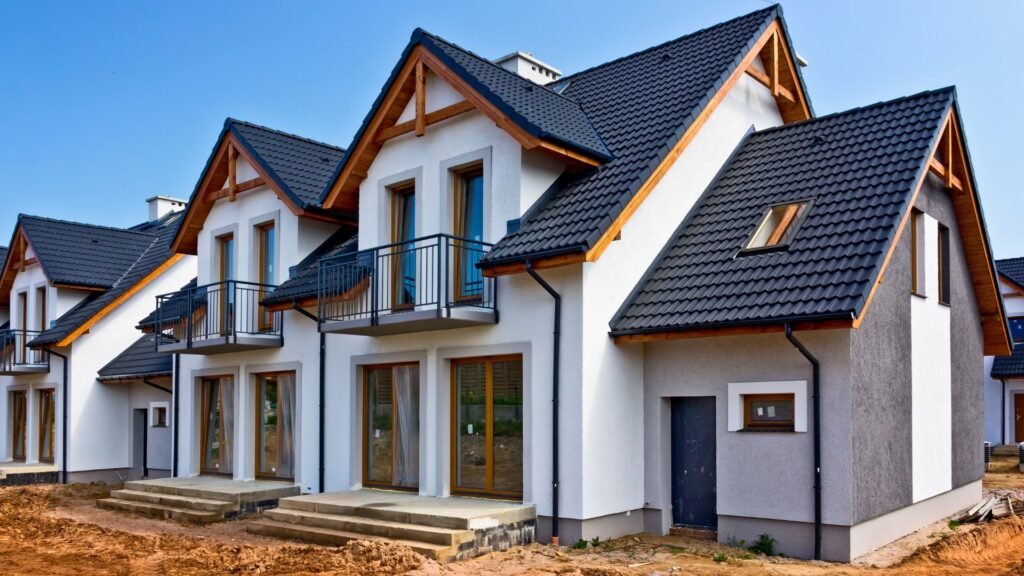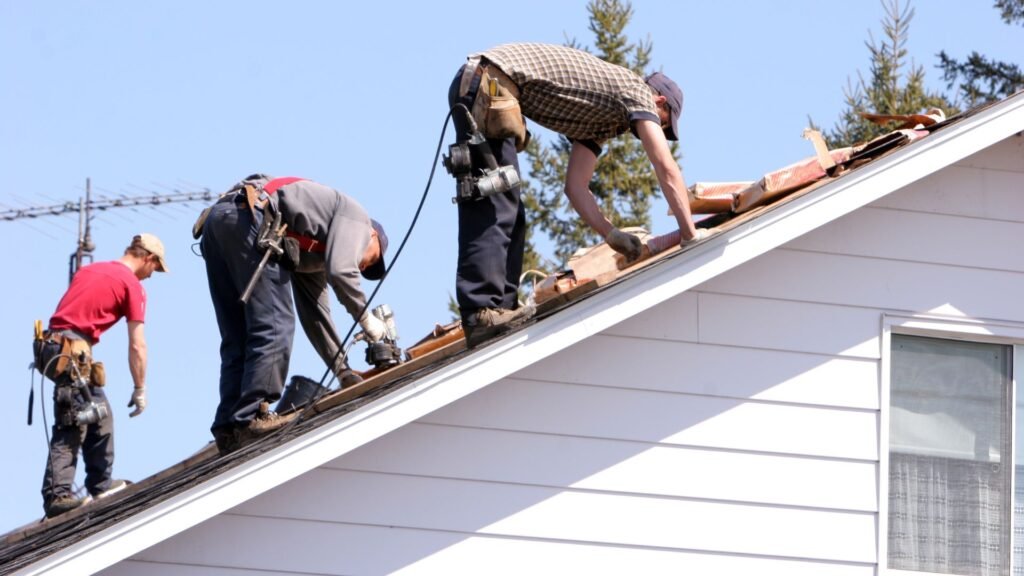Welcome to your complete guide on designing a conservatory on the Kapiti Coast, where relaxed coastal living meets smart home design. A conservatory isn’t just an extension of your home—it’s a bright, inviting space that connects you to the sun, sea breeze, and scenic outdoors that make Kapiti life special. Whether you’re planning a peaceful garden retreat, a sun-drenched dining space, or an all-weather lounge, this guide will walk you through every step. You’ll learn how to plan your design, choose the best materials for coastal conditions, stay compliant with local building rules, and bring your vision to life with expert tips that make your conservatory both stunning and durable.
When designing a conservatory on the Kapiti Coast, focus on capturing natural light while protecting against coastal winds, use durable materials like aluminium or treated timber, ensure double glazing for insulation, and choose designs that complement your home’s architecture. Always check local council requirements before starting your project.
Table of Contents
Why Build A Conservatory On The Kapiti Coast
Designing a conservatory on the Kapiti Coast is more than just a home improvement project. It’s about creating a space that celebrates the region’s natural light, relaxed pace, and scenic environment. The Kapiti Coast’s mild climate makes it one of the best places in New Zealand to enjoy a conservatory all year round. With gentle winters and plenty of sunshine, homeowners can easily extend their living space without worrying about extreme temperatures or harsh seasonal changes.
The coastal sunlight on the Kapiti Coast is a major advantage for homeowners. A well-designed conservatory captures natural light throughout the day, creating a warm, inviting space that feels open and fresh. This connection to the outdoors enhances daily living, giving you a place to enjoy morning coffee with sea views, host guests, or simply unwind with a book surrounded by sunlight. The views from many Kapiti properties make a conservatory the perfect setting to enjoy nature without leaving home.
Modern coastal living is about blending indoor comfort with outdoor freedom. A conservatory makes this possible by offering seamless indoor-outdoor flow. It serves as a bridge between your home and garden, allowing fresh air and natural light to fill the space. Whether you’re entertaining friends, growing indoor plants, or relaxing on a cool evening, a conservatory fits every lifestyle. Families love the extra room for gatherings, while retirees enjoy the peaceful retreat it provides.
From a property perspective, a conservatory adds real value. Homes with well-planned extensions attract buyers who appreciate versatile spaces that are both practical and beautiful. A conservatory designed for the Kapiti Coast climate signals thoughtful planning and attention to detail. It enhances curb appeal and boosts long-term resale potential. In many cases, a quality conservatory can increase the overall worth of your home while providing daily comfort and enjoyment.
Investing in a conservatory is more than adding space; it’s about enriching how you live. The combination of sunlight, coastal air, and scenic surroundings creates a lifestyle that’s hard to match. For homeowners seeking a balance between comfort and connection to nature, a conservatory on the Kapiti Coast delivers both style and substance.
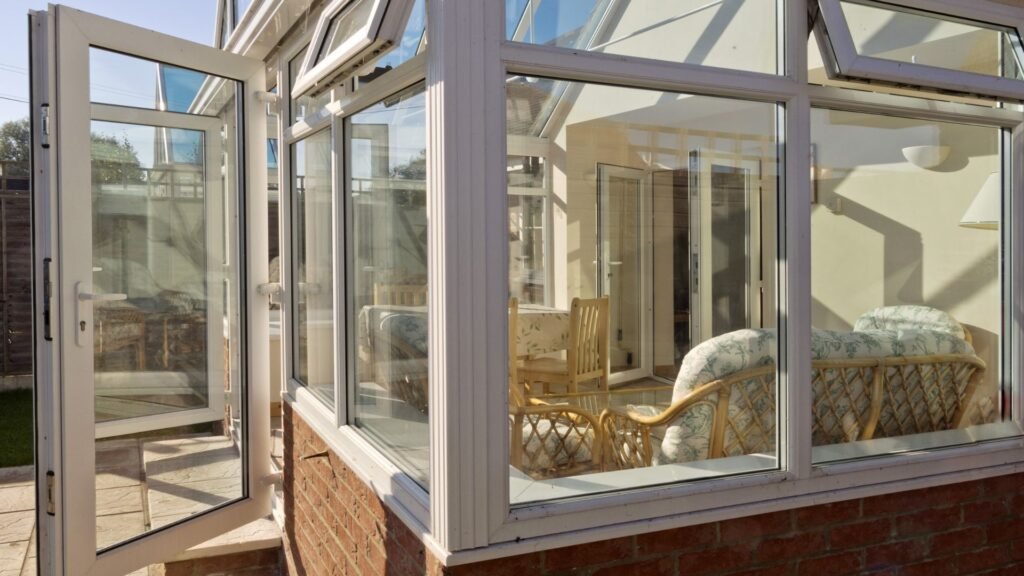
Key Considerations Before You Start
Before you begin designing your conservatory on the Kapiti Coast, careful planning makes all the difference. The right choices at the start will help you build a comfortable, durable, and compliant space that fits your lifestyle and budget. Here’s what to focus on before you start your project.
Site Orientation
The first step in planning your conservatory is choosing the right spot. On the Kapiti Coast, sunlight is one of your biggest assets. Position your conservatory to capture as much natural light as possible throughout the day. North-facing spaces often get the most consistent sunlight, which keeps your conservatory warm in winter and bright in summer.
However, the coastal winds can be strong, so protection is equally important. Use landscaping, fencing, or nearby structures to shield your conservatory from direct gusts. If your site is exposed, consider double-glazed windows and sturdy framing materials to keep the interior calm and quiet. A well-oriented design will balance warmth, light, and comfort all year round.
Council Requirements And Building Consent
Before construction begins, you’ll need to check local regulations. The Kapiti Coast District Council requires building consent for most conservatory projects, especially when the structure affects your home’s layout or foundations. This process ensures that your build meets New Zealand’s safety, structural, and environmental standards.
Review the council’s specific guidelines for residential extensions. Pay attention to setback rules, drainage requirements, and maximum height limits. Submitting accurate design plans can help you avoid costly delays or revisions later. If you’re unsure about the requirements, consult a licensed builder or architect familiar with Kapiti’s coastal regulations.
Budget Planning
A clear budget helps you manage your project from design to completion. Begin by listing all the main expenses: design fees, materials, labour, glazing, flooring, insulation, and finishing touches. On average, conservatories in New Zealand can range from NZD $15,000 for smaller builds to over $40,000 for larger, custom designs.
Plan for extra costs such as consent fees, lighting, heating, or furnishing. Coastal environments may also require higher-quality materials to withstand moisture and salt exposure. Comparing quotes from local contractors can help you balance quality and affordability while avoiding unexpected expenses during construction.
Purpose Of Your Conservatory
Every great design starts with purpose. Think about how you’ll use your conservatory day-to-day. Do you want a bright dining area for family gatherings, a peaceful reading corner, a lush garden room, or a quiet home office? Defining its role early will influence everything—from layout and materials to lighting and furniture.
If you’re planning a multi-functional space, flexible design features such as sliding doors, retractable blinds, and modular furniture can help you adapt the room as your needs change. Your conservatory should enhance your lifestyle, not just add extra square footage.

Design Ideas That Work For The Kapiti Coast
Designing a conservatory on the Kapiti Coast is about blending coastal beauty with practical living. The goal is to create a bright, peaceful space that complements your home while handling local weather conditions. Every design decision should capture sunlight, manage wind, and highlight the relaxed lifestyle that makes the Kapiti Coast unique.
Coastal-Inspired Styles
Homes along the Kapiti Coast are known for their connection to nature. A well-designed conservatory should reflect that. Use large glass walls to let in natural light and make the most of sea or garden views. Pair the glass with natural timber frames to bring warmth and texture into the space. Light, neutral tones such as white, beige, and pale grey help keep the area airy and calm. Minimalistic framing keeps the focus on the view rather than the structure, creating a seamless flow between indoors and outdoors.
For example, many homeowners in Raumati and Waikanae have chosen timber finishes and wide sliding doors that open directly into garden spaces. These designs make the conservatory feel like an extension of the outdoors, not just another room.
Space-Saving Shapes
Not every home on the Kapiti Coast has extra land to expand. That’s where space-efficient conservatory shapes make a difference. A lean-to conservatory fits snugly against an existing wall and works perfectly for smaller homes or narrow spaces. It’s cost-effective and easy to build while maintaining a modern look.
For a more classic style, consider an Edwardian design. Its symmetrical layout and pitched roof give a timeless appeal that suits both older and modern homes. If you want something unique, a bespoke curved roof adds a soft, elegant touch and improves natural light distribution throughout the day.
Blending With Existing Architecture
A conservatory should look like it has always belonged to your home. Match rooflines, paint colors, and cladding materials with your existing structure to achieve a cohesive design. Kapiti Coast architecture often features coastal elements like weatherboard siding, low-pitched roofs, and open layouts. By reflecting these features in your conservatory, you’ll create visual balance and harmony.
Some homeowners choose to extend their living room or dining area into a conservatory with similar flooring and trim. This approach makes the transition between spaces seamless and natural. It also maintains your home’s overall design character.
Eco-Conscious Design
Sustainable living is a key part of modern Kapiti Coast architecture. When designing your conservatory, think energy efficiency. Install double glazing to retain heat during cool evenings and reduce glare in summer. Add thermal insulation under the flooring to maintain comfortable temperatures all year.
Cross-ventilation is equally important. Strategically placed windows and roof vents let cool air circulate, reducing the need for air conditioning. For even greater energy efficiency, consider solar-reflective glass or shades that block harsh UV rays. These eco-conscious features not only save energy but also extend the life of your conservatory materials.
Local Inspiration
If you look at conservatory designs across the Kapiti Coast, you’ll see a strong trend toward open, light-filled spaces with earthy textures. Many local builders and homeowners combine natural stone floors with timber frames and glass roofs to achieve a clean, coastal aesthetic. Adding plants, rattan furniture, and lightweight curtains completes the look without overwhelming the space.
When possible, take inspiration from nearby builds or local showrooms. Seeing real examples helps you visualize what works well in the Kapiti environment. It also ensures your design feels authentic to the area.
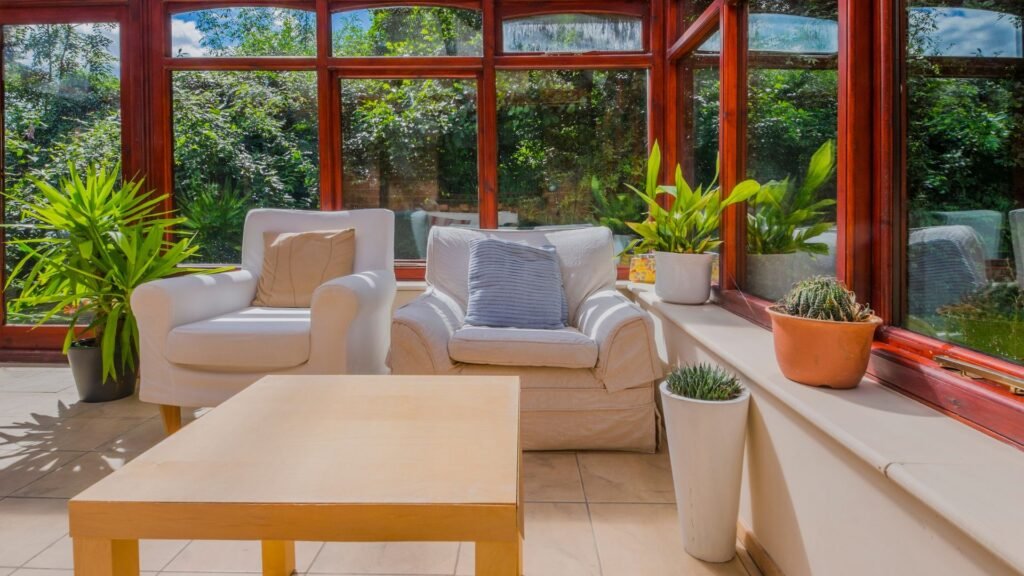
Choosing The Right Materials
Designing a conservatory on the Kapiti Coast means thinking carefully about the materials you use. The coastal environment is beautiful but demanding. Salt air, high humidity, and strong sunlight can damage surfaces and shorten the life of your build if the wrong materials are chosen. Selecting the best combination of frame, glazing, and roofing will make your conservatory durable, low-maintenance, and comfortable all year round.
Frame: Aluminium, Timber, Or uPVC
- Aluminium
Aluminium is one of the most popular choices for conservatories in coastal New Zealand. It is strong, sleek, and resistant to corrosion when properly coated. The lightweight structure allows for thin frames that maximize natural light, making it ideal for modern coastal home design on the Kapiti Coast. Aluminium also requires little upkeep. A simple wash with mild detergent every few months prevents salt buildup and keeps it looking sharp. - Timber
Timber frames offer a natural, warm look that suits traditional homes. When treated correctly, timber performs well in the Kapiti climate. The key is regular maintenance. Choose hardwoods like cedar or kwila, which resist moisture and decay. Apply high-quality marine-grade sealant to protect against the salt-laden air. Timber needs more care than aluminium or uPVC, but many homeowners choose it for its character and timeless charm. - uPVC
uPVC is a cost-effective and practical option. It provides good insulation and does not rust, making it suitable for coastal conditions. It also needs very little maintenance—just regular cleaning to prevent dirt buildup. However, uPVC can discolor or warp slightly over time if exposed to extreme heat. For smaller or budget-conscious projects, it remains one of the best materials for conservatory NZ homeowners can consider.
Glazing: Double Or Low-E Glass
Glazing determines comfort, insulation, and energy efficiency. For Kapiti’s coastal homes, double glazing is a must. It keeps the space warm in winter and cool in summer by reducing heat transfer. Low-E (low emissivity) glass takes it further by reflecting heat and blocking UV rays, protecting your furniture and flooring from fading. The combination of double glazing and Low-E coating is ideal for anyone wanting a low-maintenance conservatory that remains bright and comfortable year-round.
When planning your design, also consider tinting or self-cleaning glass options. They help reduce glare from the coastal sun and make cleaning easier, which is useful in areas with frequent sea spray or fine dust.
Roofing: Polycarbonate Vs. Glass
- Polycarbonate Roofing
Polycarbonate panels are lightweight and budget-friendly. They diffuse sunlight evenly, reducing glare while keeping the space bright. They are also impact-resistant, which is helpful during windy conditions or storms. On the downside, polycarbonate can scratch easily and may discolor over time, especially with prolonged UV exposure. Regular cleaning with non-abrasive materials helps maintain clarity. - Glass Roofing
Glass roofs create a more open, premium look. They let in plenty of natural light and, when paired with double or Low-E glass, maintain excellent insulation. Glass is heavier and slightly more expensive than polycarbonate, but it lasts longer and resists UV damage better. For coastal environments like the Kapiti Coast, glass roofs offer durability and minimal maintenance while enhancing property value.
Coastal Durability And Maintenance Tips
The Kapiti Coast’s salt air can be tough on any structure. Choose powder-coated or anodized finishes for aluminium to prevent corrosion. For timber, reseal exposed surfaces every couple of years. Clean all glass and frames regularly with fresh water to remove salt deposits. Use stainless steel fittings and fixtures wherever possible to prevent rust. These simple steps will keep your conservatory strong and beautiful for decades.
Selecting the right materials for your conservatory is more than a design choice—it’s a long-term investment. By balancing durability, appearance, and maintenance needs, you can enjoy a space that thrives in the Kapiti Coast’s coastal environment. The right combination of aluminium or timber frames, double glazing, and durable roofing ensures your conservatory stays bright, low-maintenance, and ready for the changing seasons.
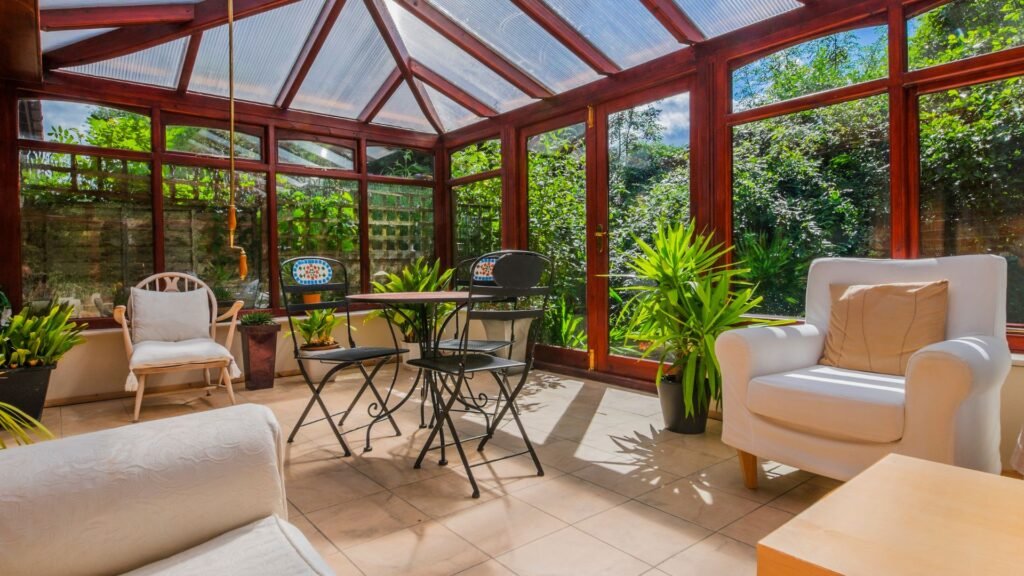
Working With Local Experts
Designing a conservatory on the Kapiti Coast is more than just a construction project. It’s about understanding the area’s unique environment, weather patterns, and architectural character. That’s why working with local designers and builders can make a huge difference in the quality, durability, and comfort of your conservatory.
Local experts bring hands-on knowledge of Kapiti’s coastal climate, where strong winds, salty air, and high humidity can affect building materials and finishes. A professional familiar with these conditions knows which materials resist corrosion, which glazing keeps interiors comfortable, and how to position your conservatory for maximum light without overheating. Their experience ensures your project is not only beautiful but built to last in local weather.
Another major benefit of hiring locally is easy communication and accountability. You can meet face-to-face, review designs together, and visit their previous builds. This personal approach helps align your ideas with what’s practical for your site. Many local professionals also have established relationships with suppliers, making it easier to source quality materials on time and within budget.
When choosing a conservatory designer or builder, look for the right certifications and credentials. Check if they are Licensed Building Practitioners (LBP) and whether they hold any relevant industry memberships. These credentials show they meet New Zealand’s building standards and operate with professionalism.
It’s also worth reviewing previous projects. Ask for photos or local references to see how their past conservatories perform in similar coastal settings. Client reviews and testimonials reveal a lot about workmanship, communication, and reliability. A trustworthy builder won’t hesitate to share feedback from past clients.
Before making a decision, compare quotes carefully. Get at least three estimates from local builders to understand fair pricing. Review what’s included in each quote—materials, permits, warranties, and aftercare. The cheapest option isn’t always the best. Focus on value, quality, and long-term performance instead of the lowest price tag.
For added peace of mind, always verify licenses, insurance, and warranties before signing a contract. This simple step protects you if any issues arise during or after construction. A reliable expert will provide clear documentation and stand by their work.
Hiring local conservatory specialists isn’t just about convenience. It’s about investing in craftsmanship that fits the Kapiti lifestyle. With local insight, transparent communication, and verified credentials, you can feel confident that your conservatory will enhance your home for years to come.
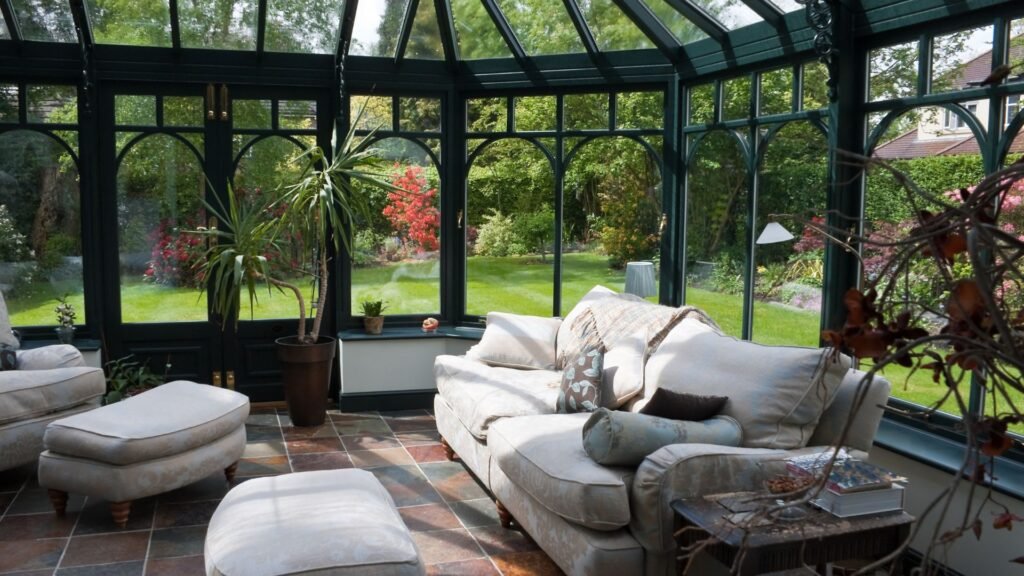
Styling And Furnishing Your Conservatory
Designing your conservatory on the Kapiti Coast doesn’t stop with structure and glasswork. The way you style and furnish it transforms the space from a simple extension into a relaxing retreat. This is where personality, comfort, and practicality come together. The right choices will help your conservatory feel inviting throughout the year while blending perfectly with the coastal character of Kapiti homes.
Furniture That Feels Light And Natural
When choosing furniture, think of comfort and coastal simplicity. Light fabrics, neutral colors, and soft textures create a calm and open feeling that suits the bright natural light typical of the Kapiti Coast. Look for weather-resistant materials such as rattan, wicker, or powder-coated metal that can handle humidity and salt in the air. Cotton and linen cushions add softness while remaining breathable. Keep furniture low and open to maintain a clear view of the outdoors. Small glass or wooden tables work well for both dining and casual lounging.
Mix and match seating styles to suit how you’ll use the space. A small dining table for family breakfasts, a daybed for afternoon reading, or two armchairs with a side table for evening chats can all fit into one well-planned layout. Choose pieces that move easily so you can rearrange them for guests or different lighting conditions.
Plants That Bring Life To The Space
Plants are key to any conservatory interior design. They connect the indoors with the garden and help regulate humidity. On the Kapiti Coast, pick hardy varieties that thrive in bright conditions such as ferns, succulents, palms, and hibiscus. These plants tolerate coastal air and sunlight while adding color and natural texture. Group plants in ceramic or terracotta pots to create layers of greenery. If you enjoy herbs or small edibles, keep a few pots of basil, rosemary, or mint near the window for fresh air and fragrance.
Lighting And Décor For Evening Use
Your conservatory shouldn’t lose its charm after sunset. Plan lighting that keeps the room inviting without overpowering the natural atmosphere. Use soft warm LED lights or pendant fixtures to create a relaxed glow. Floor lamps and wall sconces provide ambient light without glare. For extra warmth, consider fairy lights or dimmable bulbs that let you adjust brightness depending on the occasion.
Decorate with elements inspired by coastal décor NZ such as driftwood accents, light-colored curtains, woven baskets, and textured rugs. Avoid heavy fabrics that block light. Mirrors can help reflect the sunset and make the space feel larger. Keep the look minimal but personal by adding framed photos, seashell bowls, or simple art that reflects your lifestyle.
Bringing Indoor Comfort Outdoors
A successful conservatory blends indoor comfort with outdoor freshness. Choose rugs made of natural fibers, place soft cushions on chairs, and use glass tables that reflect light beautifully. These details add warmth while keeping the overall design light and airy. Make sure there’s good airflow through windows or sliding doors so you can enjoy sea breezes without sacrificing comfort.
Every item you add should serve a purpose and enhance relaxation. Whether it’s morning coffee, evening reading, or weekend gatherings, the design should make you want to spend more time there.

Common Mistakes To Avoid
Designing a conservatory on the Kapiti Coast can be an exciting project, but a few small oversights can lead to costly problems later. By learning from the most common mistakes, you can build a comfortable, long-lasting space that enhances your home and lifestyle. Here’s what to watch out for and how to get it right.
Ignoring Insulation And Ventilation
Many homeowners focus on glass design and forget the importance of insulation and airflow. Without proper insulation, a conservatory can become too hot in summer and too cold in winter. The Kapiti Coast’s coastal climate makes temperature control essential. Use double-glazed windows, insulated flooring, and roof vents to regulate warmth and moisture. Adequate ventilation prevents condensation, protects your furniture, and keeps the space comfortable year-round.
Choosing Poor-Quality Glazing Near The Coast
Cheap or thin glazing might save money upfront, but it won’t stand up to Kapiti’s salty air and changing weather. Low-quality glass can corrode, leak, or lose its clarity over time. Always choose marine-grade materials and double glazing for better insulation and UV protection. Look for glass with low-emissivity (Low-E) coatings to maintain brightness while keeping out excess heat. Investing in quality glazing improves energy efficiency and protects your home’s value.
Overloading The Space With Furniture
It’s tempting to fill your conservatory with large sofas, planters, or dining sets, but too much furniture can block sunlight and airflow. A conservatory should feel open, light, and airy. Choose smaller, lightweight pieces that complement the room’s purpose. Arrange furniture to maintain clear pathways and allow natural light to flow freely. This simple approach helps the room feel more spacious and welcoming.
Neglecting Council Consent Or Local Building Codes
Skipping building consent or ignoring Kapiti Coast District Council regulations can delay your project or even lead to fines. Every area has specific guidelines for extensions and structural changes. Before you start, check with the local council to confirm what’s required. Getting professional help from a licensed designer or builder ensures your conservatory meets safety and compliance standards. Taking this step early saves time and avoids legal complications later.
Avoiding these mistakes will make your conservatory more durable, comfortable, and compliant with local standards. With proper planning, quality materials, and attention to airflow and insulation, you’ll create a bright coastal retreat that looks beautiful and lasts for years.
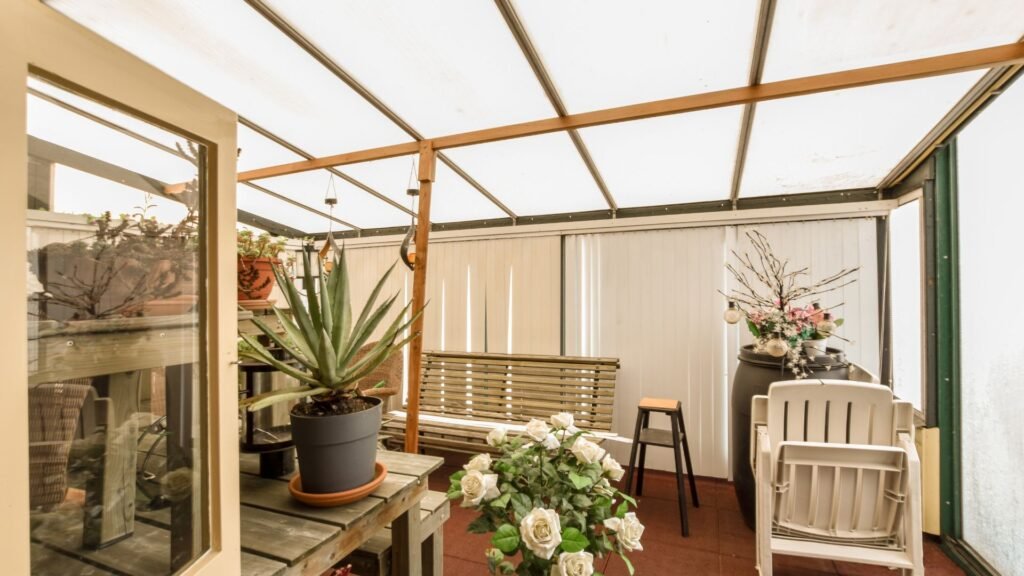
Cost Overview And Maintenance Tips
Building a conservatory on the Kapiti Coast is an exciting investment that blends lifestyle and property value. Before starting your project, it’s important to understand what influences the cost and how proper maintenance can protect your investment for years to come.
Average Pricing Range For Conservatory Design And Installation In NZ
The conservatory cost in NZ varies depending on location, design complexity, and materials. On average, homeowners can expect to spend between NZD $15,000 and $40,000 for a well-built conservatory. Smaller lean-to styles or prefabricated options may cost closer to the lower end of that range, while custom designs with premium glass, insulation, and finishes can exceed NZD $50,000.
For properties on the Kapiti Coast, pricing can also reflect coastal durability requirements. Builders often use corrosion-resistant materials and reinforced glazing to handle the sea air and strong sunlight, slightly increasing initial costs but ensuring longer lifespan and lower repair expenses over time.
When budgeting, include professional design services, building consents, and installation labour. While it’s tempting to cut corners, choosing quality craftsmanship pays off through reduced maintenance costs and improved comfort.
Factors That Influence Cost
Several elements determine the final cost of building on the Kapiti Coast:
- Size and layout: Larger or multi-purpose conservatories require more materials, structural reinforcement, and design work.
- Materials: Aluminium frames cost less than timber but offer better resistance to moisture and salt exposure. Double glazing and thermal glass improve energy efficiency but add to upfront expenses.
- Roofing and flooring: Glass roofs offer more light but need stronger support. Flooring choices like tiles or hardwood also affect total costs.
- Custom finishes: Skylights, sliding doors, built-in blinds, and heating systems raise overall pricing but enhance comfort and usability.
Understanding these variables helps you make decisions that balance aesthetics, function, and long-term value.
Maintenance Schedule For Coastal Climates
Regular care is key for keeping your conservatory looking fresh and functioning properly in a coastal setting. Salt air, humidity, and sunlight can accelerate wear, so consistent upkeep prevents costly damage.
Here’s a simple maintenance routine tailored for maintenance for coastal homes:
- Monthly: Wipe down glass panels and frames with mild soapy water to remove salt buildup and grime.
- Quarterly: Inspect door seals, vents, and joints for leaks or corrosion. Reseal any exposed edges to keep moisture out.
- Twice a year: Clean roof panels, gutters, and drains to prevent water pooling and debris accumulation.
- Annually: Apply protective coatings or polish to metal frames. For timber, re-stain or reseal exposed wood to avoid rot and fading.
Keeping up with this schedule ensures your conservatory remains weather-resistant, energy-efficient, and visually appealing throughout the seasons.
Importance Of Long-Term Upkeep For Value Retention
A well-maintained conservatory doesn’t just enhance daily living; it also safeguards your home’s market appeal. Buyers value spaces that look cared for and perform well in coastal conditions. Long-term maintenance protects structural integrity, prevents costly repairs, and maintains your conservatory’s energy efficiency.
Think of maintenance as part of your investment plan rather than an afterthought. A few hours of attention each month can extend your conservatory’s life span by decades while keeping it bright, secure, and comfortable.
Ready to turn your Kapiti Coast home into a light-filled haven? Explore our expert conservatory design services today.

Reference
- Thermadura. Contemporary Conservatory Design NZ. Available at: https://www.thermadura.co.nz/contemporary-conservatories (thermadura)
- Kāpiti Coast District Council. Building – Kāpiti Coast District Council. Available at: https://www.kapiticoast.govt.nz/do-it-online/building/ (kapiticoast.govt.nz)
- Kiwidirectory. Sustainable Coastal Homes: Building for Beauty & Resilience. Available at: https://www.kiwidirectory.co.nz/articles/coastal-home-building/ (Kiwi Directory)
- Builder Connect NZ. Conservatory Cost in NZ: A Complete Guide to Pricing, Budgeting, and Building Your Dream Space. Available at: https://builderconnect.co.nz/blog/conservatory-cost-nz/ (Builder Connect NZ)
- ArchiPro NZ. Conservatories & Sunrooms. Available at: https://archipro.co.nz/products/building-hardware/prefabricated-buildings/conservatories (archipro.co.nz)
FAQs: About Designing A Conservatory On The Kapiti Coast
What makes the Kapiti Coast ideal for a conservatory?
The Kapiti Coast’s mild weather and strong natural light make it perfect for conservatories, allowing you to enjoy the outdoors year-round.
Do I need council consent to build a conservatory in Kapiti?
Yes, most conservatories require building consent from the Kapiti Coast District Council, especially if structural changes or extensions are involved.
What is the best material for a conservatory near the coast?
Aluminium or treated timber frames with double-glazed glass are best for coastal areas due to their durability and weather resistance.
How much does it cost to design a conservatory in Kapiti?
Costs vary depending on size, materials, and design. Expect to spend between NZD $15,000 and $40,000 for a quality build.
How can I protect my conservatory from coastal weather?
Use corrosion-resistant materials, ensure good insulation, and apply protective coatings to metal frames to prevent salt damage.
What design styles suit Kapiti Coast homes?
Modern glass extensions, lean-to conservatories, and timber-framed sunrooms blend well with the coastal lifestyle and local architecture.
Can I use my conservatory year-round?
Yes, with proper insulation, double glazing, and ventilation, your conservatory can be a comfortable living space in all seasons.
What plants grow best in a Kapiti conservatory?
Choose hardy, sun-loving plants like ferns, palms, succulents, and hibiscus that thrive in bright, humid conditions.
How long does it take to build a conservatory?
From design approval to construction, the process usually takes 6 to 10 weeks, depending on size and weather conditions.
Why should I hire a local Kapiti builder for my conservatory?
Local builders understand coastal weather patterns, council requirements, and design trends, ensuring your conservatory is durable and compliant.
Conclusion
Designing a conservatory on the Kapiti Coast is one of the most rewarding home projects you can undertake. It not only enhances your lifestyle but also adds long-term value to your property by creating a light-filled space that connects your home with the region’s natural beauty. A well-designed conservatory becomes a place to relax, entertain, and enjoy the ever-changing coastal scenery, whether you’re hosting friends or unwinding with a cup of coffee in the morning sun. To achieve the best results, it’s worth consulting local experts who understand the Kapiti climate, building codes, and design trends. Their insight can help you choose the right materials, layout, and finishes to ensure your conservatory remains both functional and visually appealing for years to come.

